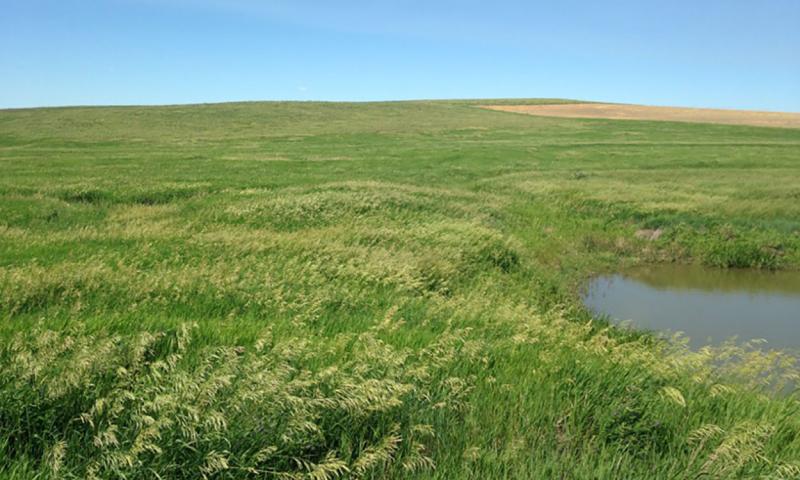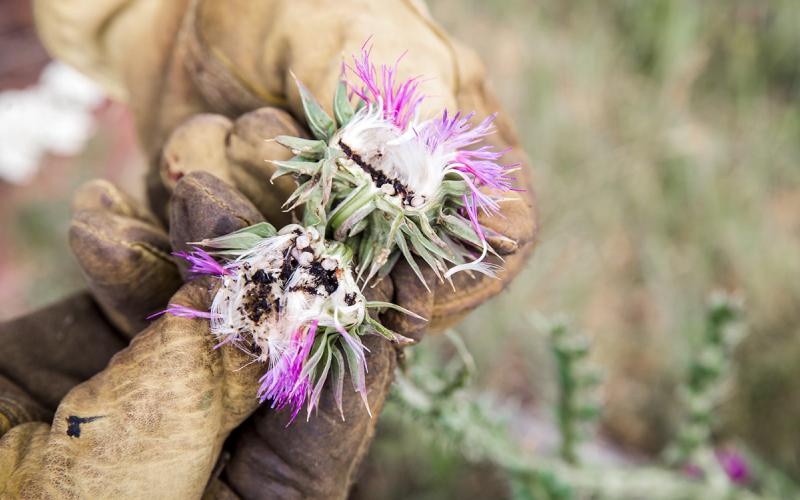
While native grasslands contribute greatly to the integrity of the overall grassland community in South Dakota, the use of introduced grasses has proven a popular alternative for some producers. Typically, introduced grasses and forbs, such as various bromegrasses, timothy, orchardgrass, ryes, alfalfas and clovers, are managed as hay and forage crops. Unlike native grasslands, these grassland species are often managed as ‘crops,’ and therefore the use of inputs, such as fertilizers and chemicals, is more prevalent.
While certainly not the case for all species, some introduced grasses and forbs can be highly invasive and can cause serious problems in native grassland communities if they are not managed properly. Examples of fairly invasive introduced grasses include species such as smooth bromegrass, crested wheatgrass, intermediate wheatgrass, Garrison creeping foxtail and certain fescues. Examples of invasive forbs include legumes, such as birdsfoot trefoil, sweetclover and certain vetches.
While all introduced species pose a certain level of risk regarding invasion into native grasslands, some popular species of introduced grasses and forbs tend not to invade as readily and can be contained with typical haying or grazing management. A few examples of species that pose a minimal threat to healthy native grasslands include orchardgrass, annual rye grasses and forbs, such as red clover.
The Healthy Grasslands article series is provided by the South Dakota Grassland Coalition in partnership with SDSU Extension. Contributing editors: Alexander J. Smart, Peter J. Bauman and Joshua Lefers. © South Dakota Grassland Coalition 2017. For more information, view the full publication or visit the South Dakota Grassland Coalition website.


